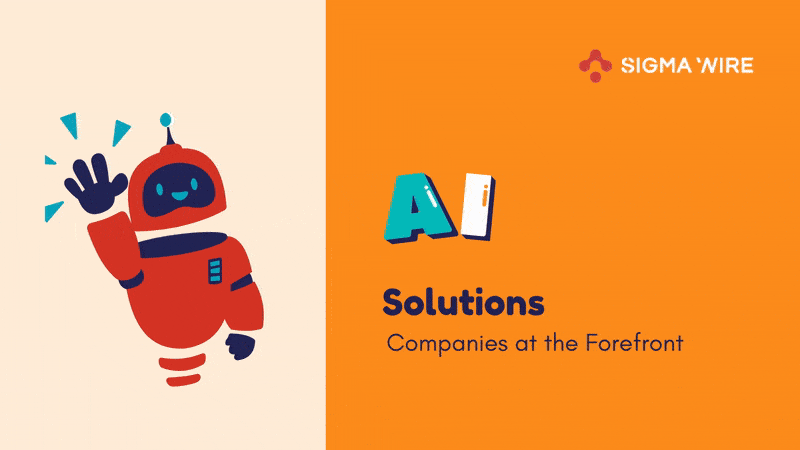Remember you and your phone are constantly taking pictures, using apps, and browsing the web? Imagine if your phone didn’t have to send all that information to a big computer far away to understand what you’re doing. Instead, imagine your phone itself could figure things out right away, like recognizing your face to unlock or translating languages on the spot.
That’s the power of Edge AI! It’s like putting tiny super brains inside everyday devices, like phones, cameras, and even factories. These devices can now learn and make decisions on their own, without needing to wait for instructions from the internet. In this comprehensive guide we will walk-through real-world case studies of edge ai.

What is Edge AI?
Edge AI makes devices like smartphones and sensors smarter by bringing artificial intelligence closer to where data is produced. Instead of sending data far away to big computer centres, Edge AI lets devices make quick decisions nearby. This helps in hospitals, cars, and homes, making tasks faster and smarter. Edge AI works better now because of improvements in AI, computer power, and IoT devices.
Here’s what makes it so Cool
- Faster: No more waiting for the cloud! Decisions happen instantly, making things smoother and quicker.
- Smarter: Devices can learn and adapt, getting better at their tasks over time.
- More private: Your data stays on your device, keeping it more secure and confidential.
Edge AI is changing the world in many ways, from making factories more efficient to helping doctors diagnose diseases earlier. It’s still early days, but the possibilities are endless.
How Does Edge AI Work?
Edge AI functions by deploying artificial intelligence algorithms directly onto devices, eliminating the need for constant connection to distant servers. Smart programs are installed on devices like smartphones or sensors, enabling quick data analysis and real-time decision-making without relying on external servers.
This approach enhances device efficiency and responsiveness, benefiting applications such as autonomous vehicles and smart home systems. Edge AI empowers devices to operate independently, leveraging local computing power for optimal performance.
Advantages of AI processing at the “edge” vs. the cloud.
- Faster Decision-Making: AI processing at the edge allows for quicker decision-making because data doesn’t have to travel long distances to the cloud and back.
- Improved Privacy and Security: Data processed at the edge stays closer to its source, reducing the risk of unauthorized access and enhancing privacy and security.
- Reliability: Edge AI systems can continue to function even if internet connectivity is limited or unreliable, ensuring continuous operation in diverse environments.
- Reduced Dependency on Internet: Since AI processing is done locally, it reduces the dependency on a constant internet connection, making systems more resilient to network failures.
In essence, AI processing at the edge offers speed, privacy, security, and reliability, making it a valuable approach for various applications and industries.
Diving into the cutting-edge advancements in this field
The cutting-edge advancements in this field represent a rapid evolution of technology. From AI and machine learning to edge computing, innovation is driving transformative changes. These advancements enable real-time data processing, autonomous decision-making, and adaptive systems. They reshape industries, offering efficiency, productivity, and new opportunities. The convergence of AI, IoT, and edge computing heralds a new era of intelligent technologies with limitless potential for innovation and transformation.
Solutions and Companies at the Forefront

In the realm of Edge AI solutions, several companies are leading the charge, driving innovation and revolutionizing industries. Red Hat stands out as a key player, offering cutting-edge container and Kubernetes technologies through platforms like Red Hat OpenShift. This enables seamless deployment of Edge AI applications, empowering businesses with efficient and scalable solutions.
want to know more about red hat Kubernetes vs OpenShift.
Microsoft’s Azure Edge offerings and Google’s Cloud IoT Edge platform also contribute significantly, providing tools and frameworks for deploying AI models on edge devices. These companies are reshaping the landscape of technology, empowering businesses to harness the power of Edge AI for enhanced efficiency, security, and performance.
Edge AI Solutions: Unveiling the Key Players and Their Offerings
Delving deeper into the realm of Edge AI solutions reveals a diverse array of offerings from key players in the industry. NVIDIA’s powerful AI computing platforms, such as the NVIDIA Jetson series, enable high-performance AI processing at the edge, empowering devices with intelligent capabilities. Intel’s hardware solutions, like the Intel Movidius Neural Compute Stick, facilitate AI inference at the edge, enhancing efficiency and responsiveness.
Additionally, Amazon Web Services (AWS) offers AWS IoT Greengrass, enabling seamless deployment of AI models on IoT devices. These solutions enable businesses to process data locally, unlocking real-time insights and actions without reliance on cloud infrastructure.
Cutting-Edge AI: Highlighting the Latest Innovations and Trends in the Market
The realm of cutting-edge AI is characterized by continuous innovation and evolving trends that shape the future of technology. One prominent trend is the integration of AI with edge computing, enabling devices to perform intelligent tasks locally, enhancing speed and efficiency. Advanced AI algorithms, including deep learning and reinforcement learning, are also gaining traction for their ability to drive accurate and efficient decision-making processes. Across industries such as healthcare, manufacturing, and autonomous vehicles, AI-powered applications are paving the way for transformative advancements. These trends underscore the growing impact of AI on businesses and society, heralding a future driven by intelligent technologies.
Edge AI Summit: Exploring Industry Events and Knowledge-Sharing Platforms
The Edge AI Summit serves as a pivotal platform for industry professionals to explore and engage with the latest developments in Edge AI technology. Through keynote speeches, panel discussions, and interactive sessions, attendees gain valuable insights into edge computing architectures, AI model deployment strategies, and real-world case studies. By fostering collaboration and knowledge-sharing among leading experts, researchers, and practitioners, the Edge AI Summit fuels innovation and drives the advancement of Edge AI technologies. This event is instrumental in shaping the future of Edge AI and its transformative impact on businesses and society.
Charting the Future: The Landscape of Edge AI Companies
Navigating the landscape of Edge AI companies unveils a diverse array of players shaping the future of technology. From established giants to innovative startups, the industry is teeming with companies driving innovation and revolutionizing various sectors. These companies leverage cutting-edge technologies and advanced algorithms to deploy AI solutions at the edge, enabling real-time decision-making and enhanced efficiency. By charting the landscape of Edge AI companies, we gain valuable insights into the dynamics and trends shaping the industry’s trajectory.
Identifying and Analyzing Leading Companies in the Edge AI Space
Identifying and analyzing leading companies in the Edge AI space offers a comprehensive understanding of the industry’s key players and their contributions. NVIDIA emerges as a frontrunner, offering powerful AI computing platforms like the NVIDIA Jetson series, enabling high-performance AI processing at the edge. Intel’s hardware solutions, such as the Intel Movidius Neural Compute Stick, facilitate AI inference at the edge, driving efficiency and responsiveness. Amazon Web Services (AWS) provides AWS IoT Greengrass, facilitating seamless deployment of AI models on IoT devices. These companies play pivotal roles in shaping the future of Edge AI, driving innovation and unlocking new possibilities.
Exploring the Dynamics Shaping the Industry
Exploring the dynamics shaping the Edge AI industry unveils a myriad of factors driving growth and innovation. From technological advancements to market trends and regulatory frameworks, various dynamics influence the industry’s trajectory. The integration of AI with edge computing, advancements in deep learning algorithms, and the proliferation of IoT devices are reshaping the landscape of Edge AI. Moreover, evolving consumer demands, industry collaborations, and strategic partnerships contribute to the industry’s dynamic ecosystem. By understanding and analyzing these dynamics, stakeholders gain valuable insights into the industry’s evolution and emerging opportunities.
Conclusion
In conclusion, the landscape of Edge AI is dynamic and evolving, driven by innovation, collaboration, and technological advancements. As leading companies continue to push the boundaries of what’s possible, the industry is poised for continued growth and transformation. By charting the future, identifying key players, and exploring industry dynamics, stakeholders can navigate this exciting frontier and unlock new opportunities for innovation and progress.
FAQs
How to Use Edge AI
Using Edge AI means putting smart programs on devices near where data is made, not just in big data centers.
What is AI at the Edge
AI at the Edge means smart programs running on gadgets near where data is made, not far away in big data centers.
How to Use Bing AI without Edge
To use Bing AI without Edge, you can use other browsers or apps that connect to Bing’s services.
What is Edge AI Computing
Edge AI Computing means doing smart calculations on gadgets near where data is made, not in faraway big data centers.
What is Edge AI Inference
Edge AI Inference is using trained smart programs to quickly make decisions on devices near where data is made, without needing to ask faraway big data centers.
What is an AI Edge Engineer
An AI Edge Engineer is a person who knows how to make smart programs work well on devices near where data is made, not just far away in big data centers.
How to Use AI in Edge Browser
To use AI in the Edge browser, you can use special features like smart search or recommendations, but these are built-in and you don’t really need to do anything special.
How to Remove Bing AI from Edge
To take Bing AI out of Edge, you can change your browser settings to use a different search engine or turn off some smart features that use Bing. You can usually do this in the browser settings.


